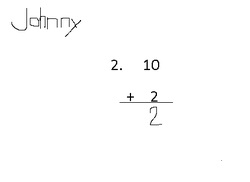Classroom Management & Discipline
Praise, Prompt, and Leave
"Weaning the helpless handraisers" (Jones, 2007).

Have you ever considered how much time you are spending with each student that raises their hand for help? The student that, when asked, "What don't you understand?" replies with an effortless, "Everything!". According to Jones (2007), teachers spend an average of 4.23 minutes with every student that raises their hand for assistance. If students are given a 25 minute block to complete an assignment, the teacher will only be able to help an average of 5 students within that block.
In an effort to "wean the helpless handraisers," Jones has created a verbal modality called Praise, Prompt, and Leave. Within these steps, Jones identifies how to quickly assist needy students so that teachers can focus on classroom management (Jones 2007).
In an effort to "wean the helpless handraisers," Jones has created a verbal modality called Praise, Prompt, and Leave. Within these steps, Jones identifies how to quickly assist needy students so that teachers can focus on classroom management (Jones 2007).
BREATHE, BREATHE, Praise, Prompt, Leave
Imagine that after spending vast amount of times planning lessons and at least twenty minutes focused on lesson instruction, students do not understand anything you just taught. Naturally, this frustration triggers a mild version of the fight-flight response (Jones, 2007). As a teacher, you want to remain calm in order to maintain high order thinking skills and be able to focus on the needs of the students. As cliche as it sounds, the first step in the verbal modality is not speaking at all, its breathing. First, a teacher must breathe to relax. Think - It's okay that they don't understand, soon they'll know it like the back of their hand (you hope)!
Naturally, human eyes are trained to locate error, especially teachers' eyes. Because a teacher needs to encourage her students, rather than send failure messages, a teacher must again breathe to focus on what the student did right. The teacher should also begin to think about what the student should do next.
Naturally, human eyes are trained to locate error, especially teachers' eyes. Because a teacher needs to encourage her students, rather than send failure messages, a teacher must again breathe to focus on what the student did right. The teacher should also begin to think about what the student should do next.
Praise
In an effort to encourage the student, the teacher should give a simple praise that focuses on what the student has done right so far (the teacher should have identified this during breathing). This state should also be related to the following prompt, if possible. State the students name, followed by, "...I like how you _________."
Prompt
All human beings learn one step at a time. Therefore, spending approximately four minutes explaining a series of steps needed to complete an assignment accomplishes nothing but cognitive overload. During the prompt, the student should be provided with a simple, declarative sentence about the very next step he or she should take. Being directly related to the praise the student just received, the one-step prompt should follow the sentence, "The next thing to do is..."
Leave
In order to make this a quick and efficient response to a raised hand, the teacher should leave as soon as he or she finishes this prompt. This way, there is no opportunity for the student to speak, discuss, or respond to the teacher. If the teacher does not leave, he or she is back to taking 4.23 minutes to nurture helpless handraisers.
Praise, Prompt, & Leave in Action

1. Breathe - to relax
2. Breathe - focus on what he has done right (added the ones column)
3. PRAISE- "Johnny, I like how you have added the ones column."
4. PROMPT- "The next thing to do is add the tens column."
5. LEAVE! Johnny has now been praised on what he has done correctly and knows the to do next!
2. Breathe - focus on what he has done right (added the ones column)
3. PRAISE- "Johnny, I like how you have added the ones column."
4. PROMPT- "The next thing to do is add the tens column."
5. LEAVE! Johnny has now been praised on what he has done correctly and knows the to do next!
Proverbs 25:11 says, "A word fitly spoken is like apples of gold in a setting of silver." Because I believe that many teachers put their students on cognitive overload instead of truly helping them understand the task at hand, I will implement Praise, Prompt, Leave modality. This modality truly provides a "word fitly spoken" because it compliments the students and lets them know what step to take next, which is all they need.
